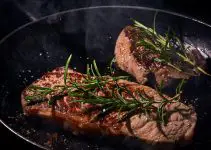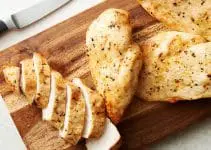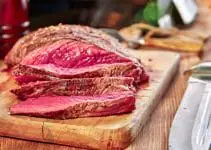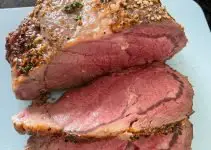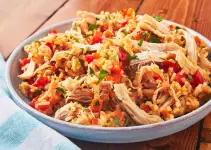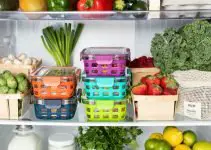There is nothing like a piece of crispy, pan-fried chicken. There’s also something to be said for a perfectly cooked, tender, juicy piece of sous vide chicken breast. That being said, pan frying is a great way to finish a piece of protein that’s been prepared sous vide style. Let’s talk about how the two cooking styles can be paired together in the home cook’s kitchen!
Specifics of pan frying
Pan fried foods use much less oil than their traditional, deep fried counterparts. Food is partly submerged in hot oil that is preheated in a shallow pan (think a large sauté pan or cast-iron skillet). The food often comes in contact with the bottom of the pan, unlike deep frying, where the food floats. This, along with temperature, is what sets pan-frying apart from other cooking techniques.1
The contact with the pan is what helps to give pan-fried food its dark brown color, caused by the Maillard reaction; the Maillard reaction is when heat interacts with amino acids and sugars on the outside of food, giving them their signature dark color and rich, nutty, flavor.
The temperature of fat in pan-frying is important; temperature is the difference between a crispy, juicy chicken breast and a greasy, heavy, soggy piece of chicken. Too high and the outside of the food will burn, leaving the inside raw. Too low, and the food will soak up the grease. Just right, and the water that is released from inside the food will produce steam, pushing the oil molecules away, preventing them from being absorbed into the food.
Sous vide vs. pan frying
- Sous vide cooking is a very low, slow cooking method that is meant to bring food to a certain temperature and then hold it.
- Sous vide cooking does not reach temperatures high enough to cause the Maillard reaction; in fact, food that are cooked sous vide are almost always finished in a hot pan or on a grill.
- Foods that are pan fried are cooked at a much higher temperature, usually 350-375 degrees. The high temperature pushes water out of the food, preventing oil from being absorbed during the cooking process. Sous vide cooking usually occurs at a much lower temperature, usually no higher than 140 for most meat, which means that it gently heats the proteins without pushing water out of the meat; that means that sous vide chicken would be much more tender than a piece of pan-fried chicken. (Read the article that we’ve published that explains more about cook times and temperature for chicken).
- Pan fried chicken would have a signature crispy, crunchy coating. This is not possible with sous vide cooking, since the food is cooked in a sealed container submerged in water.
This poses the question; could you make the most tender, juicy, perfectly cooked fried chicken using both techniques?
The answer is; YES!
First, the chicken would be cooked using the sous vide method; submerged in a sealed container, perfectly cooked to an internal temperature of at least 140 degrees (this is because it will be held for much longer, so it doesn’t need to reach the temperature of 165 degrees; however, consult your sous vide cooking guide for any questions you might have).
Once the chicken is cooked, remove it from the bag. Pat dry and then coat with batter or flour.
Prepare a pan for frying, with at least ½ inch of oil. Once the oil reaches at least 350 degrees, add the chicken. Since it’s already cooked through, it will only need to cook as long as it takes to brown the outside; flip, browning the opposite side, then remove and season with salt, pepper, or any herbs. Serve, and be prepared to knock your guest’s socks off; combining the two cooking methods is a great way to serve tender, perfectly cooked chicken with the most delicious crispy, crunchy coating.
Pan frying is a technique that is usually saved for breaded items, like fish, eggplant, or chicken. However, it can be combined with sous vide cooking to make a meal that is sure to impress any guest.
Contributor:
This article was written by Stephanie Searor, MS RD LDN
Reference:

